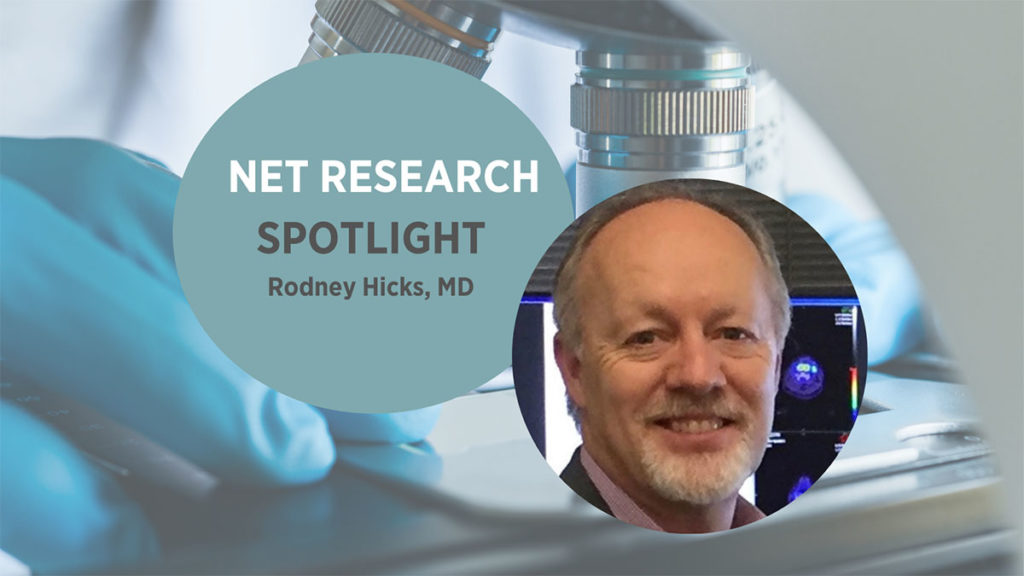
Peptide receptor radionuclide therapy, or PRRT, has been available as a treatment option for some forms of neuroendocrine tumors – particularly for those NETs expressing the somatostatin receptor-2 (SSTR2) protein.
PRRT uses Lutetium 177 (Lu-177) dotatate to treat NETs by converting a cancer cell’s unique characteristics into a welcome mat for a “Trojan Horse” packed with cancer-killing radiation. Some NETs, however, remain stubbornly resistant to this therapy.
Rodney Hicks, MD, of the University of Melbourne in Australia, is making significant strides in his quest to understand the drivers of this resistance in order to improve the clinical benefits of PRRT and ultimately make the therapy available to more patients who have NETs. The laboratory-based studies and clinical trials by Dr. Hicks and his colleagues are supported by a four-year Petersen Accelerator award from the Neuroendocrine Tumor Research Foundation (NETRF).
Specifically, Dr. Hicks and his colleagues are evaluating the impact of PRRT on tumor cells’ ability to recognize and repair radiation damage. To prevent cancer cell repair, the investigators combine PRRT with therapies that block DNA-repair mechanisms.
“Over the years we have noticed great variability in the response to that form of therapy [PRRT] amongst patients, and we believe that probably relates to the ability of cells to repair DNA damage,” Dr. Hicks said. “We now have new tools . . . to repair radiation damage in cells.”
Using cell models with specific neuroendocrine features, Dr. Hicks and his team recently found that combining PRRT and the PARP inhibitor talazoparib led to more DNA double-strand breaks and improved anti-tumor activity more than PRRT alone. A PARP can prevent cancer cell repair, which means it can stop cells from repairing damage caused by the radiation. This study demonstrated for the first time the success in vivo of combining PRRT and a PARP inhibitor to increase the anti-tumor impact of PRRT.
“We pioneered the use of PRRT with radiosensitizing chemotherapy and found it was both safe and effective,” Dr. Hicks said.
The results of the study, published in the journal Nature, lay the foundation for a future clinical trial on the combination of PRRT and PARP inhibitors in NETs that express the SSTR2 protein. Dr. Hicks is ready to begin the clinical trial as soon as COVID restrictions in Australia will allow the recruitment of patients.
